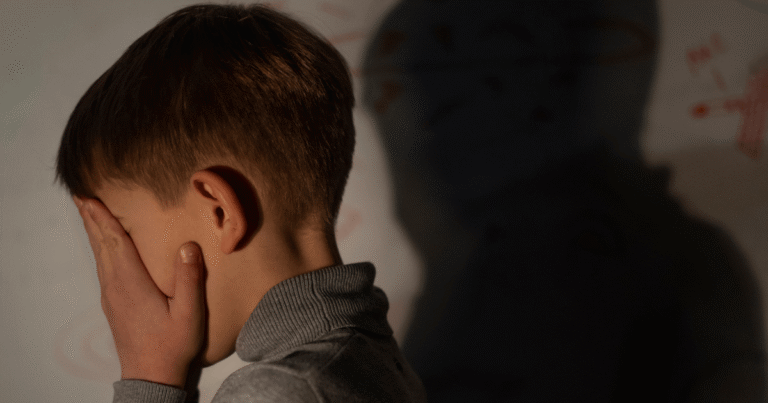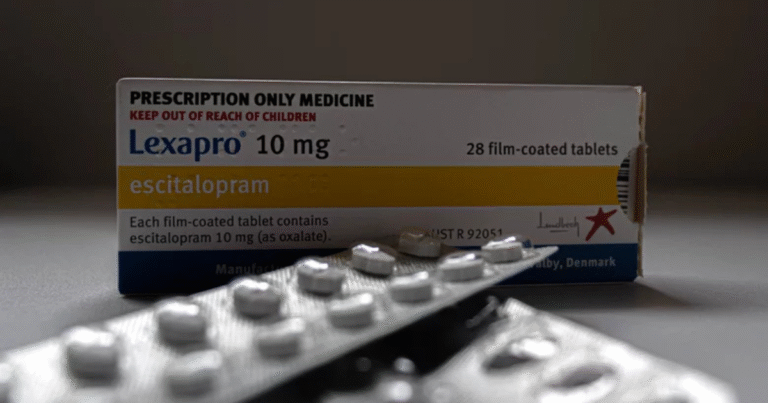The FEARED Mnemonic: A Complete Guide to Understanding Social Anxiety Disorder Diagnostic Criteria
Trying to remember the diagnostic criteria for Social Anxiety Disorder? The FEARED mnemonic is a powerful tool that mental health students, professionals, and individuals seeking to understand this condition use to recall the key features outlined in the DSM-5.
Whether you’re a psychology student preparing for exams, a mental health professional needing a quick reference, or someone trying to understand social anxiety disorder better, this social anxiety disorder mnemonic provides a systematic way to remember the essential diagnostic components of this common yet often misunderstood condition.
This comprehensive guide breaks down each element of the FEARED mnemonic, provides clinical examples, and explains how mental health professionals use these criteria in practice.
Understanding Mnemonics in Mental Health
Why Mental Health Professionals Use Mnemonics
The value of diagnostic mnemonics:
- Quick recall: Helps professionals remember complex criteria during assessments
- Systematic approach: Ensures all important features are considered
- Educational tool: Assists students in learning and retaining diagnostic information
- Clinical accuracy: Reduces the likelihood of missing important symptoms
- Standardization: Promotes consistent evaluation across different practitioners
Important note: While the social anxiety disorder mnemonic FEARED is helpful for understanding and remembering diagnostic criteria, it should never replace comprehensive clinical assessment by qualified mental health professionals.
The Complete FEARED Mnemonic Breakdown
F – Fear of Social Situations (Marked and Persistent Fear)
DSM-5 Criterion: Marked fear or anxiety about one or more social situations in which the individual is exposed to possible scrutiny by others.
What This Means in Practice
Types of social situations that commonly trigger fear:
Social interaction situations:
- Having conversations with unfamiliar people
- Meeting new people or being introduced
- Participating in small groups or team meetings
- Dating or romantic interactions
- Calling someone on the phone or making appointments
Performance situations:
- Public speaking or giving presentations
- Eating or drinking in front of others
- Writing while being observed
- Using public restrooms when others are present
- Being the center of attention (birthdays, celebrations)
Clinical examples:
- Maria experiences intense fear when attending work meetings, worried that colleagues will judge her contributions
- David feels overwhelming anxiety about eating lunch in the office cafeteria, fearing others will notice how he eats
- Sarah avoids all social gatherings because she’s terrified of having to make small talk with acquaintances
Key Diagnostic Considerations
“Marked” fear means:
- The fear is significantly more intense than normal social nervousness
- It’s disproportionate to the actual threat posed by the social situation
- The intensity is consistent and predictable when encountering these situations
- It goes beyond cultural norms for appropriate social caution
“Persistent” indicates:
- The fear occurs consistently across time
- It’s not just a temporary reaction to stress or life changes
- The pattern has been present for an extended period (see Duration requirement)
E – Exposure Provokes Anxiety (Immediate Anxiety Response)
DSM-5 Criterion: The social situations almost always provoke fear or anxiety.
Understanding the Anxiety Response
Characteristics of the provoked anxiety:
- Immediacy: Anxiety begins quickly upon exposure or anticipation
- Intensity: Often described as overwhelming or panic-like
- Consistency: Happens “almost always” when exposed to the trigger
- Physical symptoms: May include panic attack-like symptoms
Physical manifestations commonly seen:
- Rapid heartbeat and palpitations
- Sweating, particularly facial sweating
- Trembling or shaking hands/voice
- Blushing or flushing
- Nausea or stomach discomfort
- Dizziness or lightheadedness
- Muscle tension
- Difficulty breathing or shortness of breath
Clinical Examples
Immediate response patterns:
- John’s heart starts racing the moment he walks into a crowded restaurant
- Lisa begins sweating profusely as soon as she’s asked to introduce herself in a group
- Mark experiences nausea every time he has to give a presentation, starting hours before the event
Anticipatory anxiety:
- The anxiety response often begins well before the actual social exposure
- People may experience days or weeks of anxiety leading up to a social event
- Sleep disturbances and appetite changes may occur in anticipation
A – Avoidance or Endurance with Intense Distress
DSM-5 Criterion: The social situations are avoided or endured with intense fear or anxiety.
Two Behavioral Patterns
1. Active Avoidance:
- Complete avoidance of feared social situations
- Elaborate planning to prevent exposure to triggers
- Social isolation and withdrawal from activities
- Career or academic limitations due to avoidance
2. Endurance with Distress:
- Forcing oneself through feared situations despite intense anxiety
- Using safety behaviors to cope (bringing a friend, avoiding eye contact, etc.)
- Experiencing significant distress throughout the social interaction
- Physical and emotional exhaustion following social events
Real-World Impact Examples
Career and academic avoidance:
- Turning down job promotions that require public speaking
- Choosing careers that minimize social interaction
- Avoiding classes that require presentations
- Not participating in professional networking opportunities
Social and relationship avoidance:
- Declining invitations to parties or social gatherings
- Avoiding dating or romantic relationships
- Not attending family events or celebrations
- Isolating from friends and social support systems
Endurance strategies and safety behaviors:
- Always bringing a trusted friend to social events
- Sitting near exits for easy escape
- Using alcohol or substances to cope with social situations
- Rehearsing conversations extensively beforehand
- Avoiding eye contact or speaking very quietly
R – Recognition that Fear is Excessive (In Adults)
DSM-5 Criterion: The individual recognizes that the fear or anxiety is out of proportion to the actual threat posed by the social situation and to the sociocultural context.
The Insight Component
What recognition means:
- Adults with social anxiety often know their fear is excessive
- They understand that the social situation isn’t actually dangerous
- This insight can create additional distress and frustration
- Knowing the fear is irrational doesn’t make it easier to control
Clinical significance:
- This criterion helps distinguish social anxiety disorder from realistic social fears
- It indicates preserved reality testing and insight
- The recognition often increases self-criticism and shame
- It’s what drives many people to seek treatment
Important Developmental Considerations
In children and adolescents:
- This insight requirement may not apply
- Young people may not have the developmental capacity to recognize excessive fear
- Children might believe their fears are completely justified
- Assessment focuses more on observable behavior than insight
Cultural considerations:
- What’s considered “excessive” varies across cultures
- Some cultures emphasize social hierarchy and proper behavior more than others
- Clinicians must consider cultural context when evaluating this criterion
- Immigration and cultural transition can complicate this assessment
E – Embarrassment or Humiliation is Feared
DSM-5 Criterion: The individual fears that he or she will act in a way or show anxiety symptoms that will be humiliated or rejected by others.
Core Fear Content
Specific fears of negative evaluation:
- Being seen as anxious, nervous, or “weird”
- Making mistakes or saying something stupid
- Being judged as incompetent or inadequate
- Having visible anxiety symptoms (blushing, sweating, trembling)
- Being rejected or excluded by others
The visibility concern:
- Fear that anxiety symptoms will be noticed by others
- Worry that internal distress is obvious to observers
- Concern about being “found out” as anxious or inadequate
- Hypervigilance about others’ reactions and expressions
Clinical Examples of Fear Content
Performance-related fears:
- “Everyone will see that I’m shaking and think I’m not qualified for this job”
- “If I stumble over my words during the presentation, they’ll think I’m incompetent”
- “People will notice I’m sweating and wonder what’s wrong with me”
Social interaction fears:
- “They’ll think I’m boring and won’t want to talk to me again”
- “If I blush when talking to him, he’ll think I’m immature”
- “Everyone will see that I don’t know what to say and feel sorry for me”
D – Duration and Distress/Impairment
DSM-5 Criteria: The fear, anxiety, or avoidance is persistent, typically lasting for 6 months or more, AND causes clinically significant distress or impairment in social, occupational, or other important areas of functioning.
Duration Requirement (6+ Months)
Why duration matters:
- Distinguishes disorder from temporary stress reactions
- Ensures the pattern is stable and not situational
- Indicates the condition is unlikely to resolve without intervention
- Helps differentiate from adjustment reactions to life changes
Clinical considerations:
- In children, the duration must be at least 6 months
- The 6-month period helps rule out temporary reactions to life stressors
- Symptoms typically begin in adolescence or early adulthood
- Early onset (childhood) often predicts more severe, persistent symptoms
Impairment and Distress
Areas of significant impairment:
Social functioning:
- Difficulty forming and maintaining friendships
- Avoidance of dating and romantic relationships
- Social isolation and loneliness
- Reduced social support networks
Occupational/Academic functioning:
- Underperformance due to anxiety in social aspects of work/school
- Avoidance of career opportunities requiring social skills
- Difficulty with job interviews and workplace interactions
- Academic underachievement due to avoiding participation
Other important areas:
- Family relationships strained by avoidance and anxiety
- Reduced quality of life and life satisfaction
- Limited participation in community activities
- Health impacts from chronic stress and isolation
Measuring Clinical Significance
Indicators of clinically significant impairment:
- The person’s life goals are significantly limited by their anxiety
- Daily functioning is regularly disrupted by social fears
- The individual experiences significant distress about their social anxiety
- Important life opportunities are missed due to avoidance
- Relationships suffer due to social anxiety symptoms
Additional Diagnostic Considerations
Differential Diagnosis
Conditions that may mimic social anxiety disorder:
Panic Disorder:
- Panic attacks may occur in social situations
- However, the fear is of the panic attack itself, not social evaluation
- Agoraphobia may develop as a secondary condition
Generalized Anxiety Disorder:
- Worry is pervasive across many life domains
- Social situations are just one of many worry topics
- Less specific fear of social evaluation
Autism Spectrum Disorder:
- Social difficulties due to communication and interaction challenges
- Not primarily driven by fear of negative evaluation
- Different developmental pattern and presentation
Normal shyness:
- Doesn’t meet the severity, duration, or impairment criteria
- More situation-specific and manageable
- Doesn’t significantly limit life functioning
Specifiers and Subtypes
Performance-only subtype:
- Fear is limited to performance situations (speaking, performing, eating in public)
- Social interaction situations don’t cause significant anxiety
- Important for treatment planning and prognosis
Generalized subtype:
- Fears encompass most social and performance situations
- Typically more severe and impairing
- Often requires more intensive treatment
Using the FEARED Mnemonic in Practice
For Mental Health Students
Study strategies:
- Use the mnemonic to organize your understanding of social anxiety disorder
- Practice applying each criterion to case examples
- Create your own clinical vignettes that illustrate each component
- Use the mnemonic during practice diagnostic interviews
Exam preparation:
- Memorize the mnemonic and practice explaining each element
- Understand how the criteria work together to define the disorder
- Be able to differentiate social anxiety disorder from similar conditions
- Practice writing diagnostic justifications using the FEARED criteria
For Mental Health Professionals
Clinical assessment:
- Use the mnemonic as a mental checklist during diagnostic interviews
- Ensure you assess all components systematically
- Document how each criterion is met in your clinical notes
- Use the structure to organize your diagnostic reasoning
Treatment planning:
- Different FEARED components may require different treatment approaches
- Avoidance patterns (A) may need exposure therapy
- Cognitive distortions (R, E) may benefit from cognitive restructuring
- Duration (D) information helps set realistic treatment expectations
For Individuals Seeking Understanding
Self-education:
- Use the mnemonic to better understand your own experiences
- Recognize the complexity and legitimacy of social anxiety disorder
- Understand what mental health professionals look for in assessment
- Prepare for discussions with potential therapists or doctors
Important reminders:
- Self-diagnosis is not recommended or reliable
- Professional assessment considers many factors beyond these criteria
- Treatment is available and effective for social anxiety disorder
- Seeking help is a sign of strength, not weakness
Beyond the Mnemonic: Treatment and Recovery
Evidence-Based Treatments
Cognitive Behavioral Therapy (CBT):
- Addresses the cognitive (thinking) components of FEARED
- Helps challenge fears of embarrassment and excessive worry
- Includes exposure therapy to address avoidance patterns
- Most effective treatment with strong research support
Exposure therapy:
- Specifically targets the avoidance component (A)
- Gradual, systematic confrontation of feared social situations
- Helps people learn that their fears don’t come true
- Builds genuine confidence through successful experiences
Medications:
- SSRIs and SNRIs can help reduce overall anxiety levels
- May make it easier to engage in therapy and face fears
- Not a cure but can be helpful as part of comprehensive treatment
- Particularly useful for severe cases or when therapy alone isn’t sufficient
Prognosis and Hope
Recovery outlook:
- Social anxiety disorder is highly treatable
- Most people see significant improvement with appropriate treatment
- Early intervention leads to better outcomes
- Many people go on to live full, socially connected lives
Long-term management:
- Skills learned in treatment provide lasting benefits
- Some people may need occasional “booster” sessions
- Lifestyle factors like exercise and stress management support recovery
- Building social support networks aids in maintaining progress
Conclusion: The FEARED Mnemonic as a Learning Tool
The social anxiety disorder mnemonic FEARED provides a systematic way to understand and remember the key diagnostic features of this common and treatable condition. Whether you’re studying psychology, working in mental health, or seeking to understand your own experiences, this mnemonic offers a structured approach to recognizing the complex components of social anxiety disorder.
Key takeaways:
- FEARED captures all essential DSM-5 diagnostic criteria for social anxiety disorder
- Each component represents an important aspect of the condition
- The mnemonic helps ensure comprehensive assessment and understanding
- Professional diagnosis and treatment remain essential for proper care
Remember: While mnemonics like FEARED are valuable educational tools, they cannot replace professional clinical judgment and assessment. If you recognize these patterns in yourself or others, seeking qualified mental health care is the most important step toward understanding and recovery.
Social anxiety disorder is real, common, and treatable. The FEARED mnemonic helps us understand its complexity, but professional help provides the path to recovery and a more confident, connected life.







